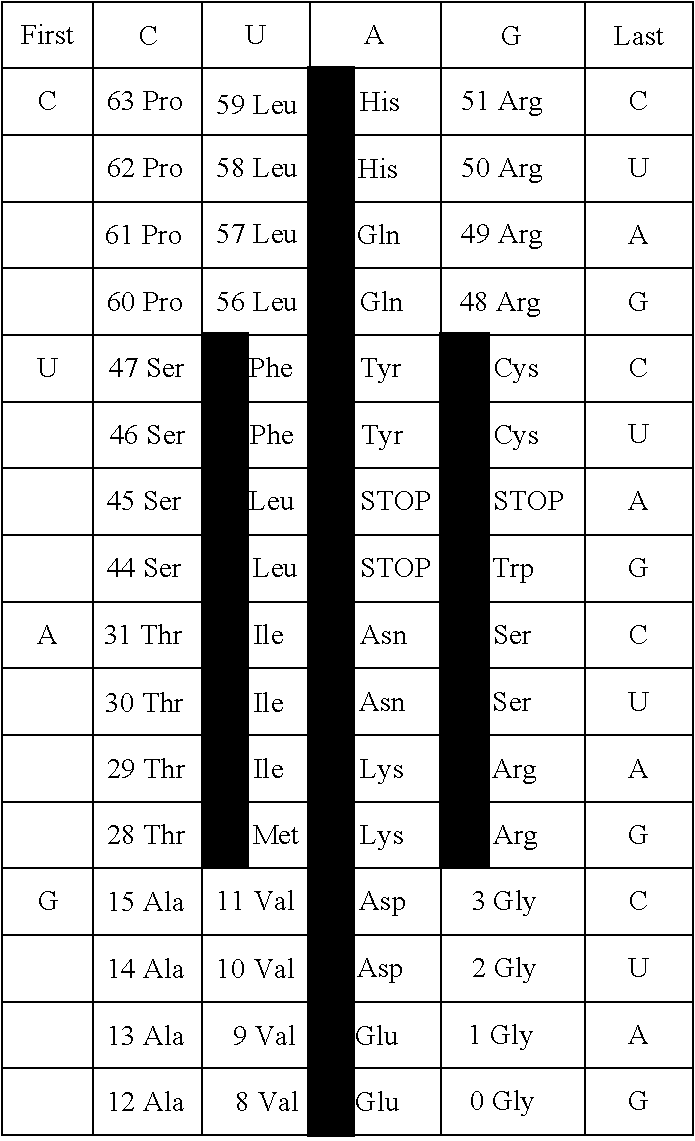Method for conversion of a DNA sequence to a number string and applications thereof in the field of accelerated drug design
a technology of dna sequence and number string, which is applied in the field of dna sequence conversion into number string, can solve the problems of affecting accuracy, organisms or datasets specific, and prior art methods suffer from several, etc., and achieve the effect of reducing the number of conversions, and improving the accuracy
- Summary
- Abstract
- Description
- Claims
- Application Information
AI Technical Summary
Benefits of technology
Problems solved by technology
Method used
Image
Examples
example 1
[0114] Comparison of conventional GeneScan and the system of the invention on a common data set “HMR 195”: Reference: (Rogic et al., 2001) Sanja Rogic, Computer Science Department 2366 Main Mall, University of British Columbia, Vancouver, B.C., Canada V6T 1Z4 11
[0115] DNA sequences were extracted from GenBank. The basic requirements in sequence selection were that the sequence was entered in GenBank after August, 1997 and the source organism is Homo sapiens, Mus musculus or Rattus norvegicus. Only genomic sequences that contain exactly one gene were considered. mRNA sequences and sequences containing pseudo genes or alternatively spliced genes were excluded. Sequences collected according to those principles were further filtered to meet following requirements. All annotated coding sequences started with the ATG initiation codon and ended with one of the stop codons: TAA. TAG, TGA. All exons had dinucleotide AG at their acceptor site and dinucleotide GT at their donor site. Sequence...
PUM
| Property | Measurement | Unit |
|---|---|---|
| time | aaaaa | aaaaa |
| dimension | aaaaa | aaaaa |
| fractal dimensions | aaaaa | aaaaa |
Abstract
Description
Claims
Application Information
 Login to View More
Login to View More - R&D
- Intellectual Property
- Life Sciences
- Materials
- Tech Scout
- Unparalleled Data Quality
- Higher Quality Content
- 60% Fewer Hallucinations
Browse by: Latest US Patents, China's latest patents, Technical Efficacy Thesaurus, Application Domain, Technology Topic, Popular Technical Reports.
© 2025 PatSnap. All rights reserved.Legal|Privacy policy|Modern Slavery Act Transparency Statement|Sitemap|About US| Contact US: help@patsnap.com

